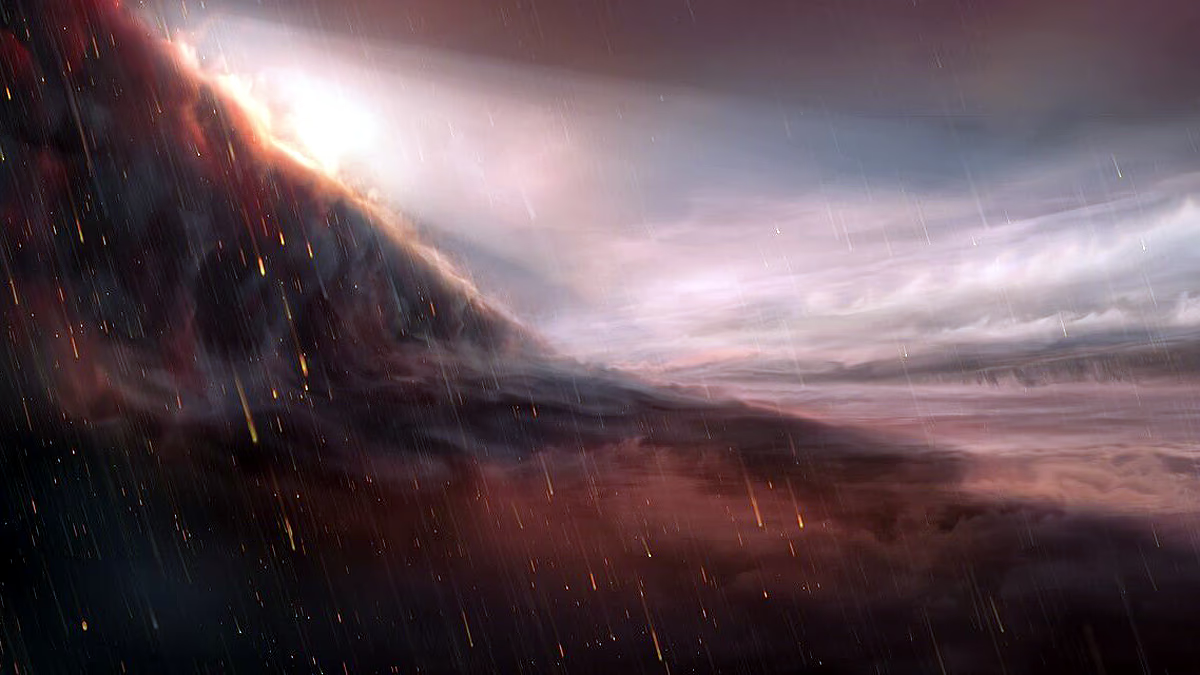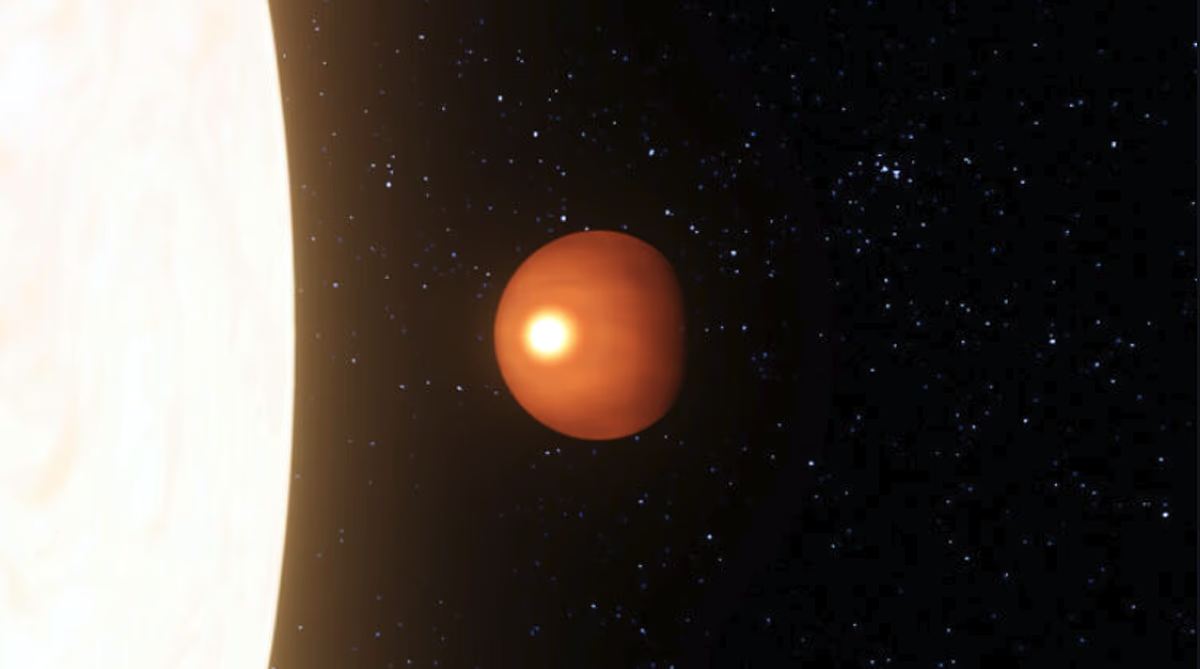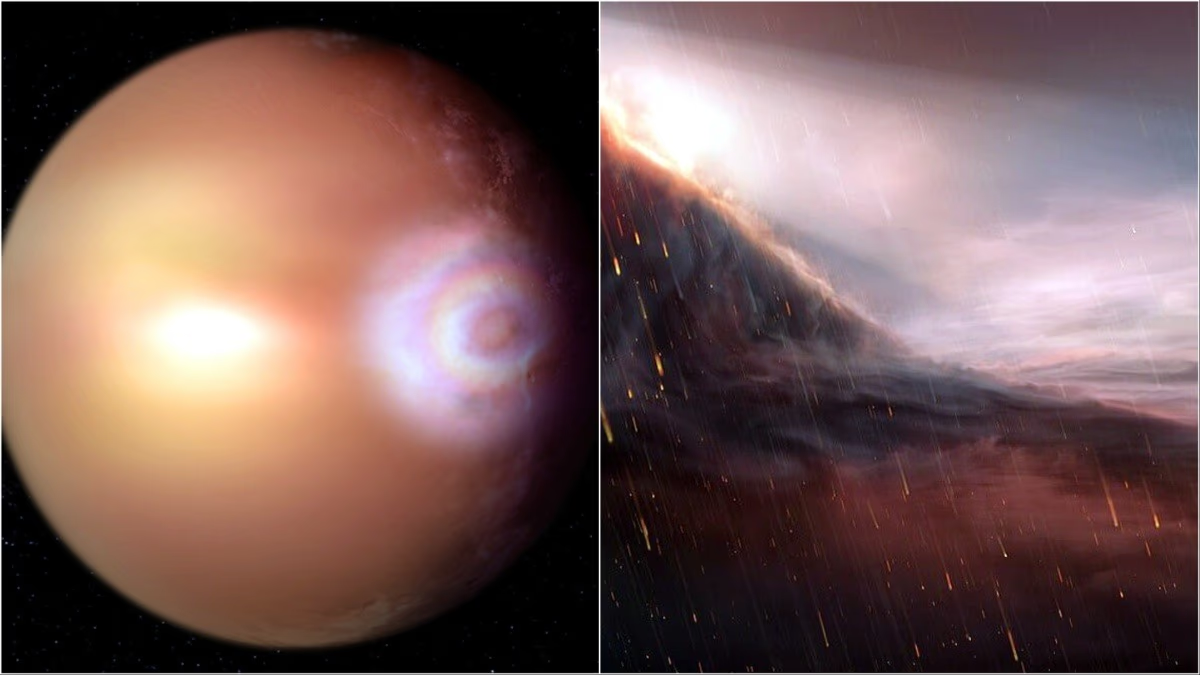Scientists at the University of Geneva have discovered a hellish planet that defies their imagination. This planet is named WASP-76B. The weather here is severely harsh. There is wind, but it blows at extreme speeds. The air is densely packed with micro iron particles. The daytime temperature remains at 2000°C, meaning everything gets molten.
Astonishingly, this planet is tidally locked to its star, much like our moon. Therefore, intense winds constantly blow around it, laden with high concentrations of iron particles that are continually moving up and down within its atmosphere. As a result, layers of iron particles form, and due to the extreme heat, they melt during the day and fall onto the planet's surface.
Also read:

Source: aajtak
This is an exoplanet, meaning it exists outside our solar system. Since 1990, scientists have discovered about 5200 such exoplanets. Among these are several giants like Jupiter and Saturn, some rocky, and others similar to Earth. However, it's still unknown whether any of them have conditions suitable for life.
About 640 Light Years from Earth
WASP-76b has recently captured much attention. It is an ultra-hot gas planet located about 640 light years from Earth towards the constellation Pisces. It was discovered in 2013, and studies have been ongoing ever since. Its orbit is very close to its host star, completing one orbit in just 1.8 days.
Also read:

Source: aajtak
New Insights from the Discovery of Iron Particles
One side of the planet is always illuminated, while the other side is in perpetual darkness. This leads to daytime temperatures soaring to 2000°C, causing iron particles to float in the air. However, as temperatures drop at night, these iron particles cool and settle onto the ground. Recently, scientists at the University of Geneva discovered these iron particles and published their findings in the journal Astronomy & Astrophysics.




